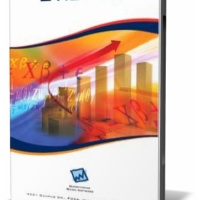Econometric Views, or as it is more commonly known as, EViews, is a statistical analysis software package for Windows systems. Having gained a presence in economics class rooms around the world, its primary use as been for econometric analysis for time series, forecasting for models, and testing for correlation between variables.
Eviews was originally developed by Quantitative Micro Software or QMS in 1994, but has been updated over its run with Eviews 7.2 being released in November of last year.

Features includes on Eviews includes the ability to run basic statistical analysis of data sets including P-stats, F-tests, standard errors and R Squared stats. In addition to these tests, it can run time series estimation, forecast data and due other econometric analyses including panel data analysis or cross-section analysis. The software is a combination of spreadsheet and databases that uses limited object orientation programming.
While the program easily provides relevant statistical data to an accurate level, its usability is not always its strong strength. If provided with already compiled data in workfiles, the program runs without a snag and could be argued as one of the most effective statistical analysis programs on the market.
The largest issue with Eviews is the difficulty associated with bringing your own data into the program. Allowing imports of Excel files among other options, the program requires a strict following of guidelines for it to be deciphered and properly imported.
Instead of just allowing data to be easily organized in rows and then relevant data selected during the import process, it requires a strict set up in the files to even bring the data in whatsoever, let alone correctly.
Once data is imported or added into the system, tests can be ran fairly easy, though they again do not always do what is best for usability. Some of the statistical tests functions are seemingly hidden in the menus or require the user to input information instead of just running the test.
To run a regression in eviews, and continue with other data, it requires the user to “freeze” a data screen which will only retain the onscreen data analysis, requiring the user to retype their regression if they want to run it again or run any variation of it. This leads to a screen at times getting cluttered or the user spending more time doing what they have already done.
While not a must, an ability to tell users what each number means or what is or is not significant could make the program more marketable. Users are expected, as perhaps they should be, to already know what everything on the screen is and what it does. Reasonable in some regards, but not exactly realistic and it limits their market to a small class of students.
Eviews can be used in almost all industries and all class rooms to test for correlations between variables and building models. Seeing its primary usage in economics, it has found a nice niche and the program offers great overall features, though it could work on its ease of use to expand its market. It could also be found relevant in politics, sociology, psychology, marketing, political science, human resources and other similar fields. This makes Eviews a great business deal.
